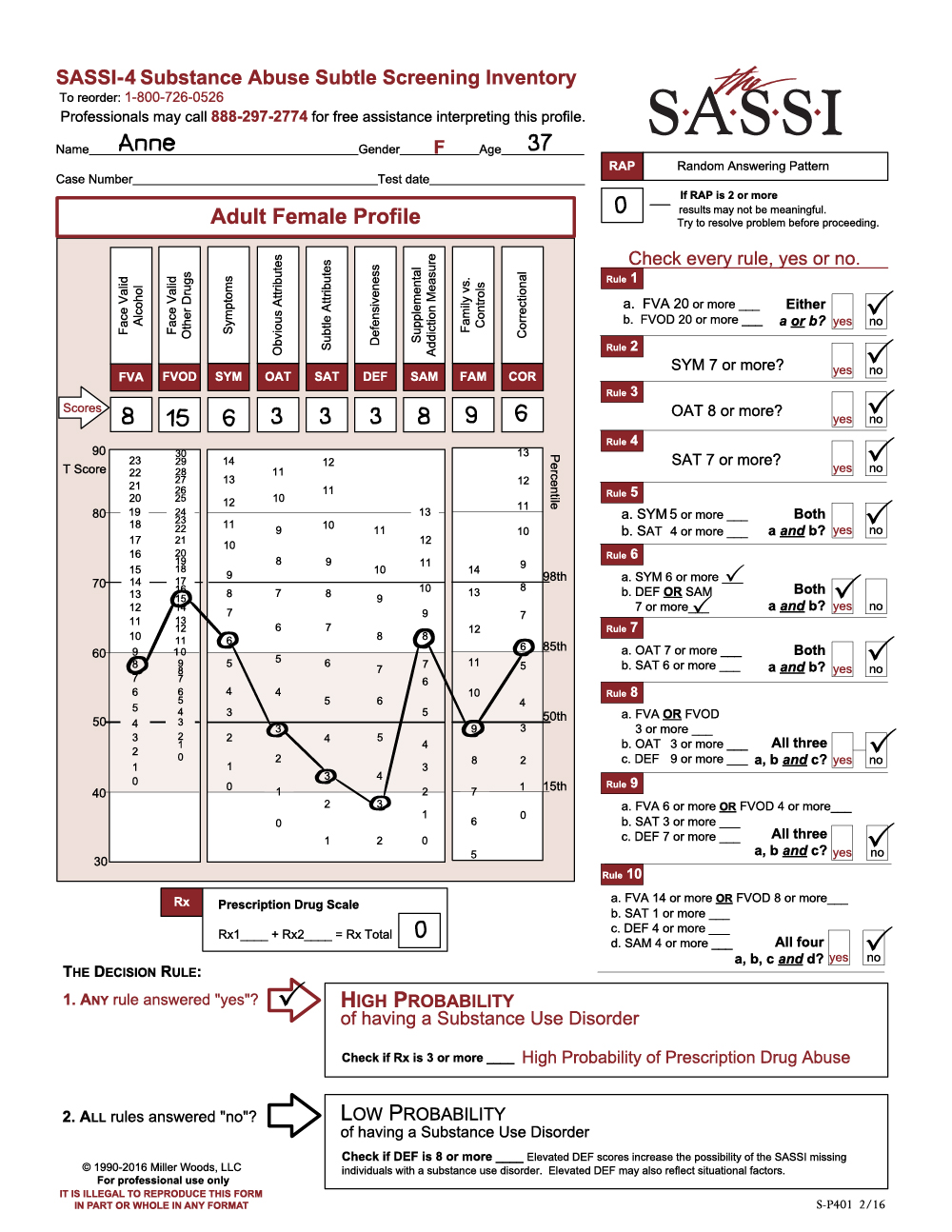This SASSI-4 profile of a 37-year-old female was called in to our clinical support line. As we look at her results, it appears that she answered the items in a meaningful manner (RAP=0). She is likely to have a high probability of a substance use disorder (SYM=6, SAM=8) based on decision rule 6.
Notice that despite the relatively low DEF score and apparent lack of defensive responding, the SAM scale score, when combined with the elevated SYM score, leads to a test positive result. While it is true that the SAM scale score plays a vital role in the accuracy of the decision rules in this case, it is important to remember that the clinical meaning of this score is unclear. Therefore, it would be inappropriate to draw any clinical inference from the fact that the SAM score is elevated.
The client acknowledges significant problems related to her use of drugs other than alcohol. She is likely to have experienced some loss of control, negative consequences, and increased tolerance as a result of her substance misuse. However, her average OAT score (OAT=3) may be an indication of some limited ability or willingness to acknowledge behavioral problems commonly associated with individuals who have substance use disorders.
The moderately elevated SYM (SYM=6) is consistent with clients who often are not able to recognize the manner in which substance use is manifested in their lives. Her responses are similar to individuals who live in a social milieu where substance abuse and its related consequences are fairly routine and normalized. This experience may limit her ability to characterize her substance usage as problematic. Indeed, she may be somewhat surprised that the SASSI results could even indicate an addiction problem.
The client’s responses are similar to those of individuals who are experiencing emotional pain (DEF=3). Individuals who score in this range tend to be overly self-critical, may experience depressive symptoms and sometimes report a history of trauma. She may be quite limited in her ability to recognize personal strengths, focusing more on limitations, failures and feelings of low self-worth.
This client is likely to have a high probability of a substance use disorder and should be considered for relatively intensive addictions treatment. A comprehensive behavioral health evaluation may be necessary to rule out the need for additional psychiatric intervention. Although she demonstrates some ability to acknowledge relevant behavioral symptoms of her addiction, a viable treatment plan should include initial efforts to increase her self-awareness and insight into the full nature of her substance use problems. Education and other cognitively based interventions may be helpful.
Most likely, she will need help in recognizing that her misuse of alcohol and other drugs is similar to that of other substance dependent people. A content analysis of her responses on the FVOD and SYM items may be one way to help her realize that it is in her best interest and within her capacity to change.
Community-based self-help support groups could provide additional encouragement and support.
In addition, evaluation for depressive symptoms and its relationship to her substance us would be important to consider.

